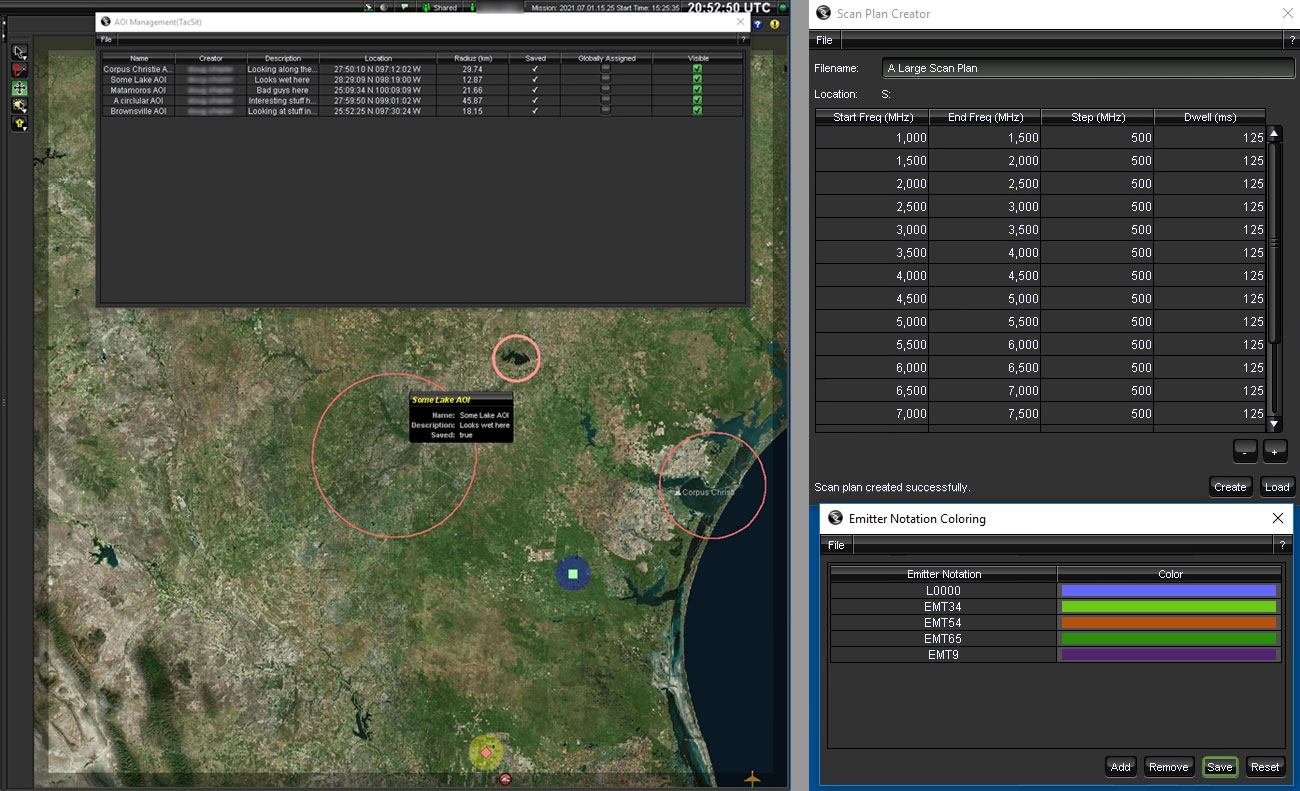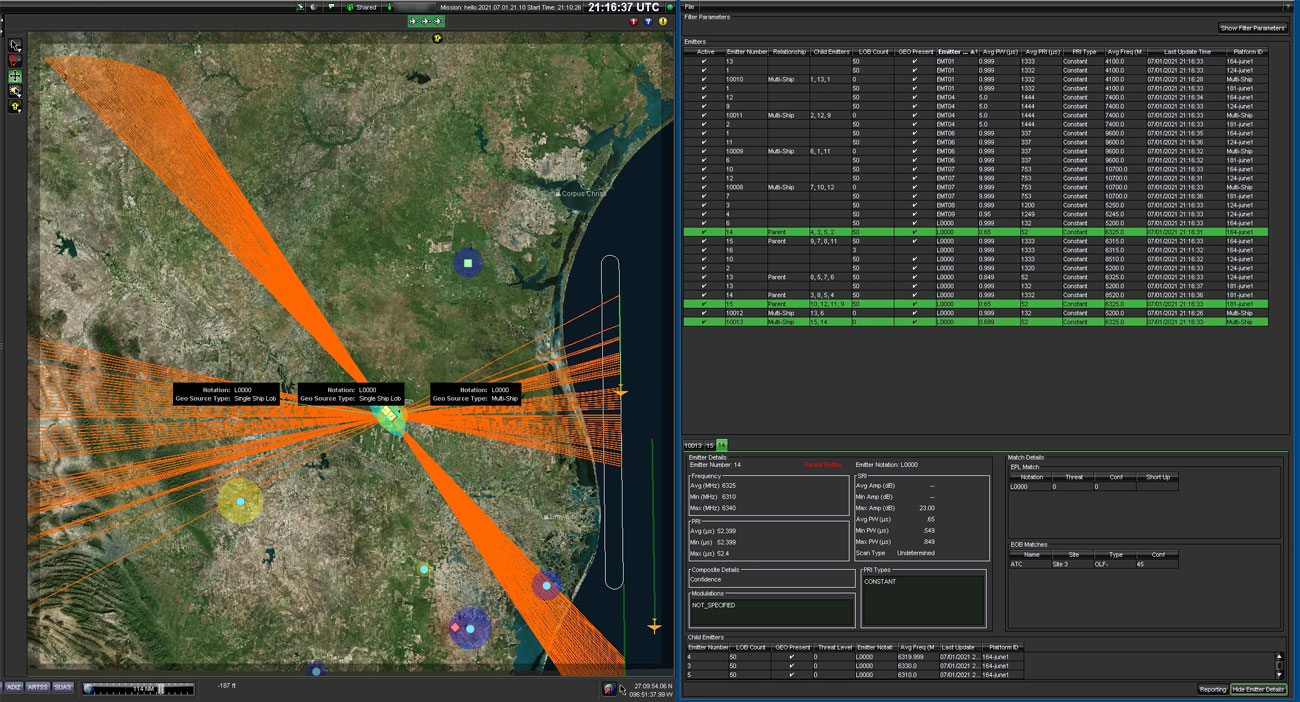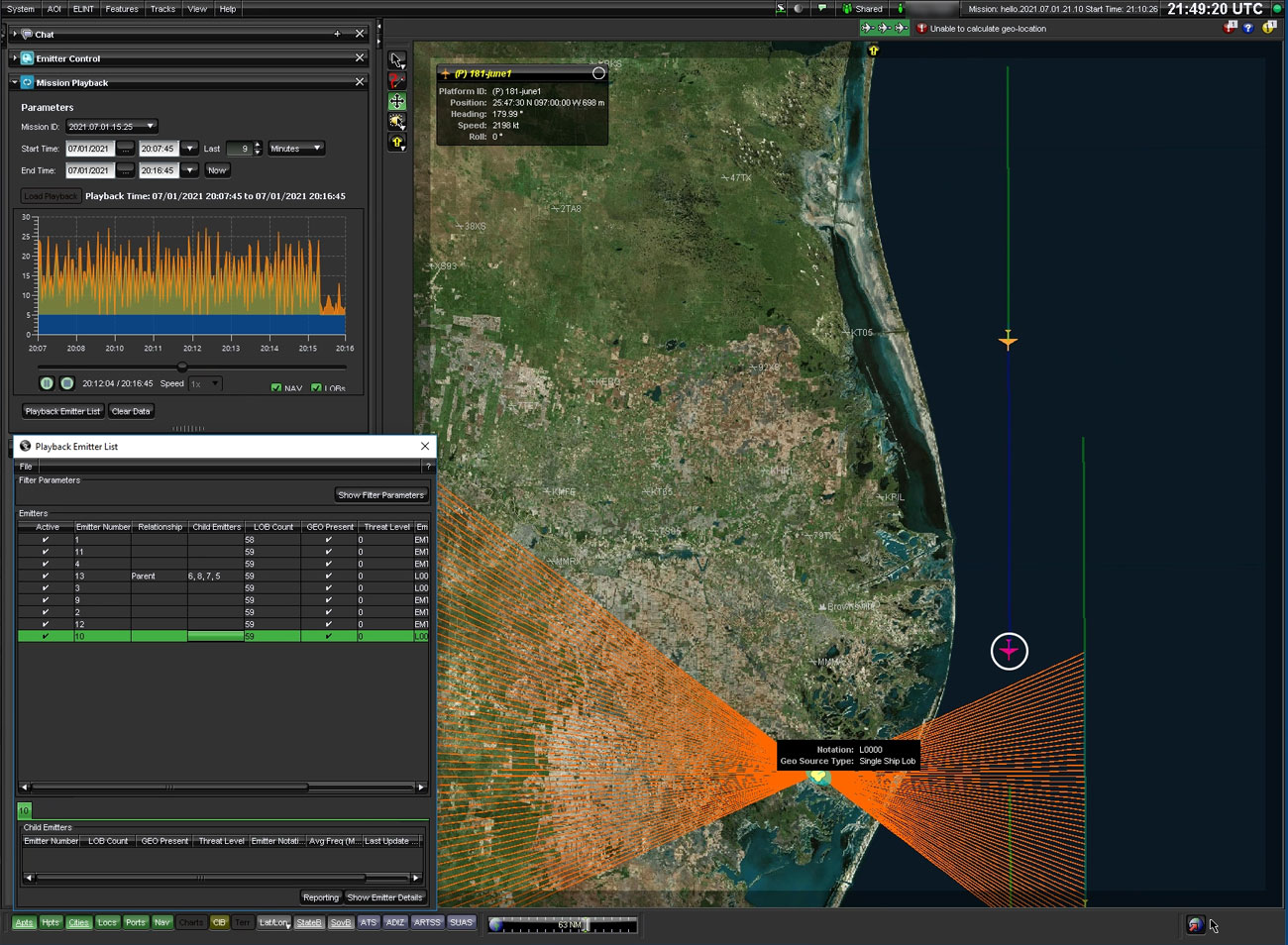TALIX: Tactical
Precision


Clarity
TALIX is a multi-user, multi-platform TCPED system supporting COMINT and ELINT mission lifecycle with superior SIGINT mission planning, collection, analysis and report capabilities.

Planning
The TALIX pre-mission planning tools range from EOB management and planning to sensor scan plan and identification configuration management critical for mission operation, data dissemination, and post-mission analysis.
The standardized user interface (UI) implements compliant military symbols, the international standard unit of measure preferences, and practical mapping tools that accelerate mission terrain visibility and operational clarity.

Operations
The TALIX mission operations tools provide complete situational awareness of detected signals for a group of operators. Each user can tailor their displays to filter the specific data they are interested in based on signal parameters, aircraft tail number, or a personal area of interest. Operators can generate reports on emitters of interest, research collected mission data using the database tools and analyze changes in the electronic order of battle.

Analysis
The TALIX post-mission operations provide several methods for reviewing a completed mission. In addition to operators creating reports on specific emitters, the post-mission report summarizes all observed emitters in a single report package. There are two methods of reviewing past mission data from the TALIX database.
Both operations present the data in a table, and when selected, it shows on the map. The operators can then report on individual emitters using post-mission results in the same manner as done in-mission.
The TALIX mission playback allows users to specify a time period and replay the data in real-time or up to 10x speed.
The TALIX mission analysis lets an operator perform database queries using time and signal parameters.
FAQ
The TALIX architecture was designed from the beginning to support new features and interfaces with minimal disruption to the code baseline and architecture. Over time, refinements are applied to the design to be even more flexible as new feature requests are received and implemented.
Yes, the TALIX development is done according to ISO compliant processes, including peer reviews and security scans. Voyager has documentation that can support requesting and achieving approval to operate on classified networks.
The TALIX system was architected to support distributed operators in multiple ground sites or split between ground and air sites. The flexible messaging system allows Voyager to host software components where needed to meet the customers’ needs regarding operator placement.
The TALIX system can scale down to a single laptop with sufficient computing resources. The services and user interface can all execute on a single computer that has connectivity to the collection payload.
The answer varies, but testing with modest computing resources showed TALIX could process emitters from multiple aircraft, each with hundreds of emitters in the field of view at one time. Higher rates can be achieved with additional computing resources.
The TALIX system comes with several reports, a per-emitter report, and a full mission report. These reports are output in a format that is easy to read and convert by other systems. The system design supports custom report formats and workflows.


